
Would you invite an owl to your garden party?
If so, it’s time to add a new item to your checklist of gardening chores: how to create an “owl-friendly yard”.
But in order for a nocturnal creature to accept the invite, you first need to know a thing or two about owls. What they like (dark) and what they dislike (lights).
Naturally, owls also have their food preferences, housing needs and an environment that feels wild enough to call home.
If you’ve started the process of rewilding your garden, you may have even heard owls in night. Adding a few more elements of nature will hopefully encourage them to come closer.
Owl Attraction
Humans are attracted to owls for several reasons. For starters, they are associated with magic and mystery, art and myths. Owls are considered both wise and foolish, depending on where you source your information. Not to mention the obscure owl folklore that is both grotesque and captivating at the same time.
Believe what you will, owls are more than just a bad omen. There are some very practical reasons why you might try attracting them to your backyard, which we’ll get to in just a moment.
If you are lucky, a fine specimen might even swoop in by their own accord and sit on an abandoned chimney. Just as this long-eared owl (Asio otus) has been doing for the last two months in the home next to ours.
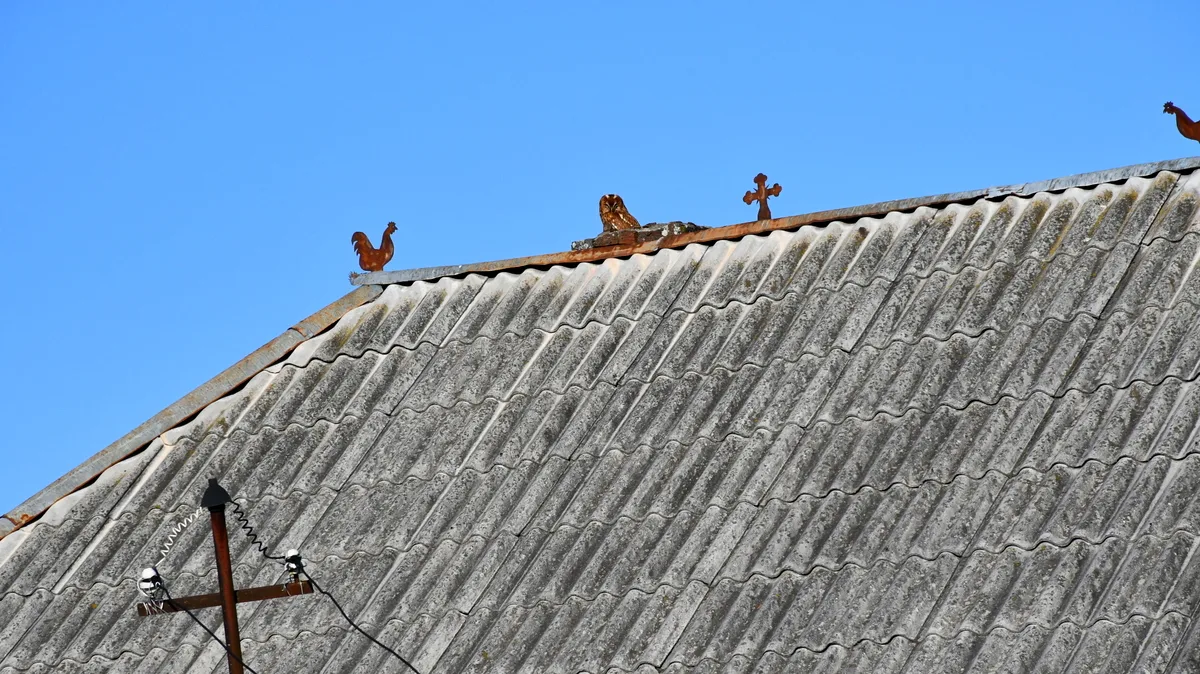
Nearly every day it is perching out in the open, occasionally opening an eye to see what’s going on. Especially when it is taunted by a murder of crows.
Know the Prime Environment Owls Will Be Attracted To
If you’ve never seen an owl or heard one, in your neighborhood, chances are that your home is in too urban of an area.
Owls require a large hunting territory of several acres, which encompasses grassy, wide-open expanses, as well as sections with mature trees to roost in. It never hurts to have hedgerows either.
So, if you are thinking of attracting owls to your backyard, the more rural you are, the better off you – and the owls – will be.
Reasons To Attract Owls
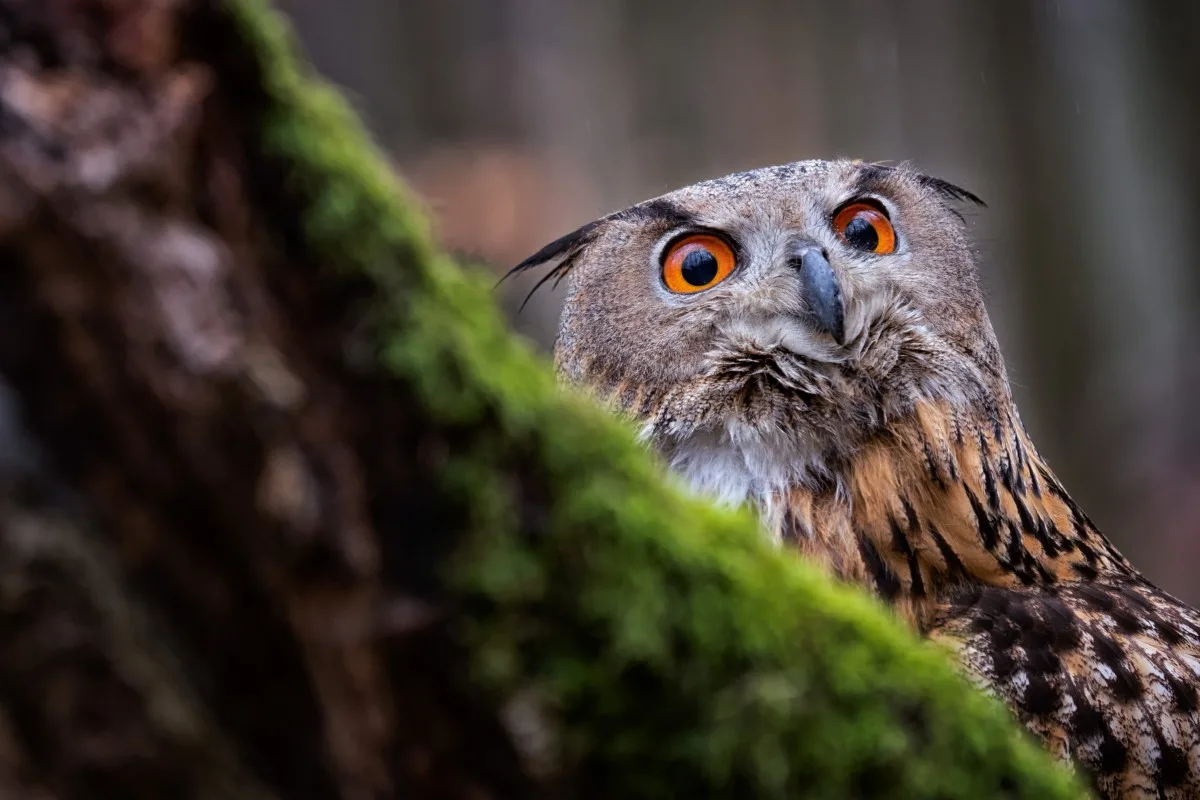
If you have a mice or vole problem in your yard, it’s worth trying to attract an owl to help balance the situation.
Smaller owls will also consume insects and other invertebrates. Everything from moths, beetles, worms, spiders and centipedes, to crickets and even scorpions.
Larger owls, such as Great Horned owls will eat opportunistically. Whatever prey they find to eat is fair game: squirrels, cats, tiny dogs, baby raccoons, and other owls.
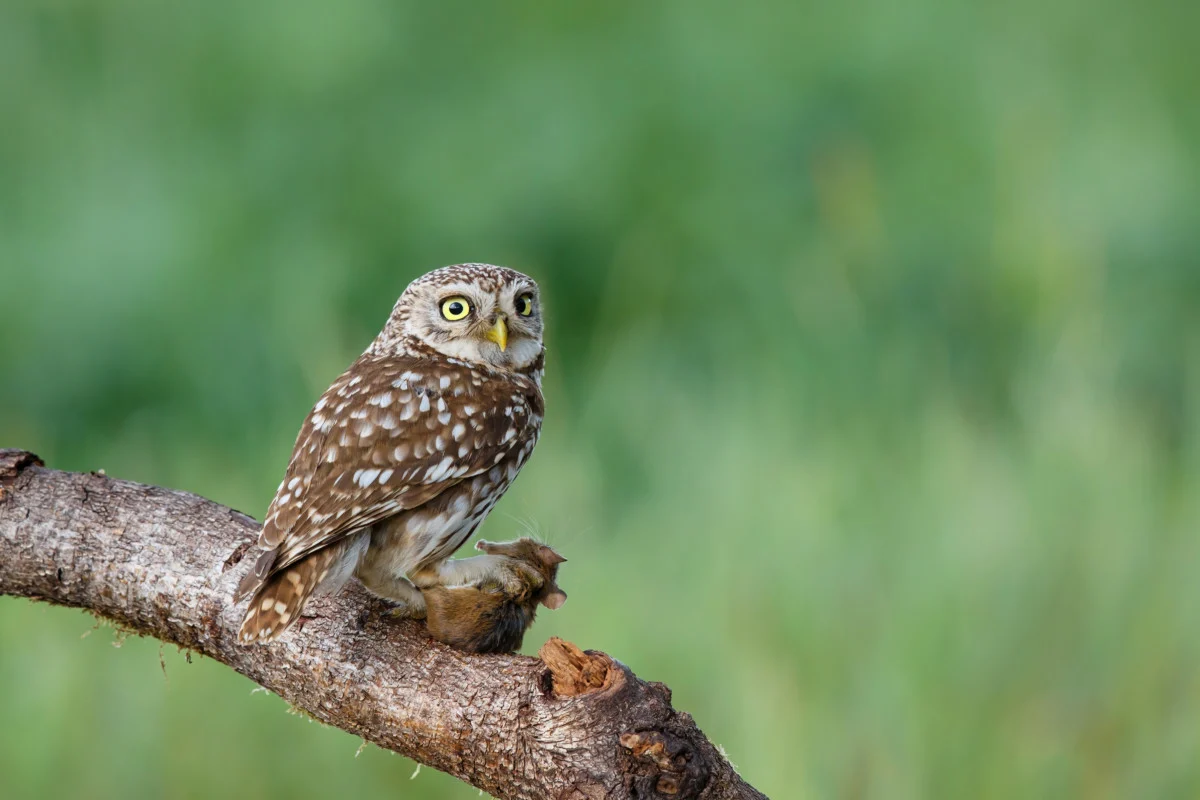
In the wild, owls will also consume bats, songbirds, reptiles, amphibians, fish, skunks, snakes, shrews, rabbits, hares and rodents of every shape and size. It all depends on who (what species) is doing the hunting.
In the garden, getting rid of rodents is a good thing. And owls do it in a chemical-free way where everyone benefits.
Since owls are squatters, all they need is a nice nesting box, a hollowed-out cavity built by other birds or any old hole in a tree. As with diet, they are also opportunistic in finding a nest, rather than building one for themselves.
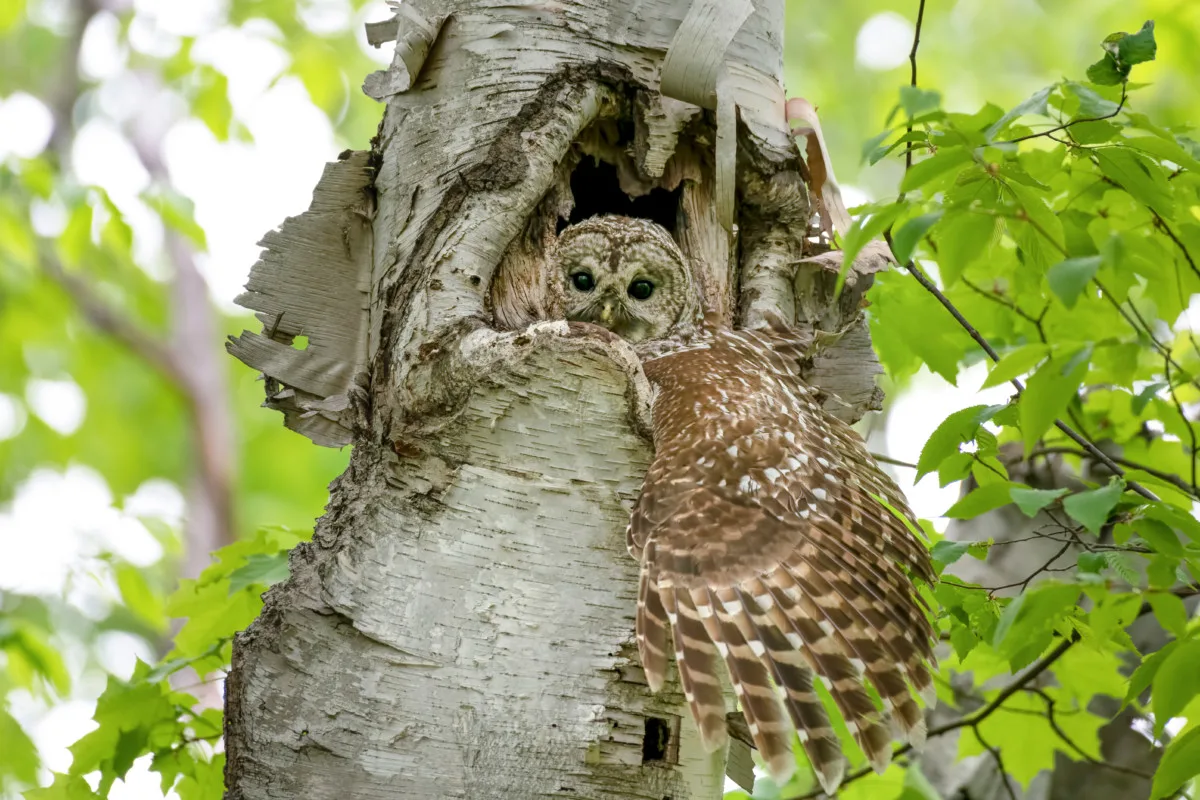
Once an owl decides that your backyard is a fantastic place to live, it will stay there to hunt for a long time. So let’s get to the list of ways to attract owls to your garden, then we’ll quickly describe what sort of owls you might attract with your efforts.
8 Steps to Create an Owl-Friendly Yard
1. Stop Mowing Your Lawn
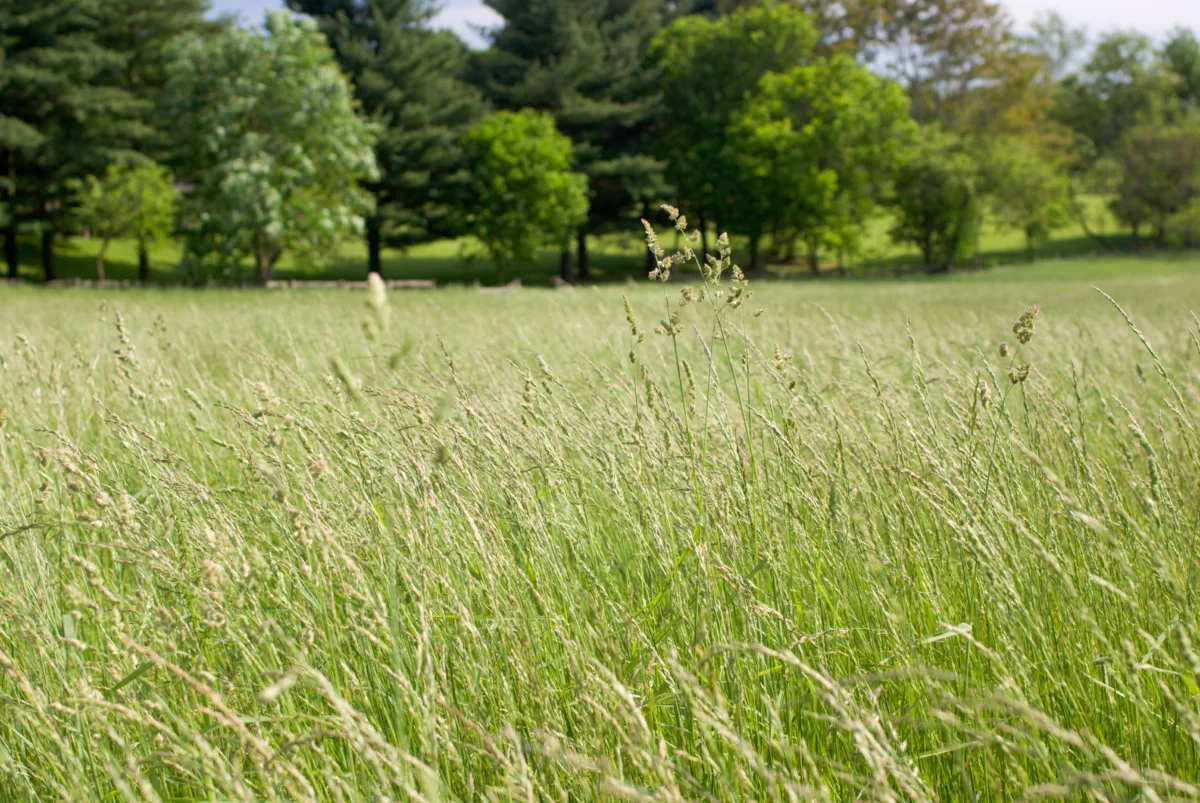
Or at least part of it.
In order for an owl to enjoy its meal, it also needs to take pleasure in the hunt.
Seeing as how predator birds prefer their prey alive, it’s best to also have a rodent-friendly garden. Of course, owls will eat insects too, but those insects and rodents need somewhere to hide. Leaving a brush pile helps to attract small rodents, including hedgehogs.
When you let your lawn grow, or in other words – turn it into a wildflower meadow, you are creating space for nature to happen and events to unfold. An unmown lawn can also provide you with wild herbs to forage for, so it’s a win-win situation. As you diversify the habitat of your backyard, you are helping the greater environment to thrive.
Plus you won’t have to use any pesticides or fertilizers on that beautiful meadow of yours. That’s an important feature for the owls, it’s next on the list.
2. Go Organic
If it’s better for you, it’s superior for owls too. Now is the time to give some serious thought to cleaning up your backyard. Getting rid of all insecticides, pesticides and toxic fertilizers.
You know that cats and dogs that eat poisoned mice and rats also get sick. The same happens with owls. Never put out rat poison if you have an affinity for owls.
The best thing you can do is get rid of chemicals altogether. I know, this can be a challenge, but with some permaculture principles under your belt, it becomes easier and easier to garden in a new way.
Here is a selection of articles to find inspiration for your organic garden:
- 9 Best Organic Fertilizers for Feeding Your Plants and Garden
- 7 Reasons to Start a Forest Garden and Everything You Need to Know
- How to Utilize Trap Crops To Save Your Garden From Pests
- How To Release Ladybugs Into Your Garden (and Why You Should)
3. Plant Trees and Let Them Grow Big!

If you have large trees already growing in your garden, you’re off to a great start in providing roosting places for owls. But it doesn’t always happen like that. Perhaps your neighbor’s backyard has larger trees, or maybe there is a park nearby. It doesn’t necessarily have to be your tree that the owls are coming to.
Yet, owls will often return to large trees and bare branches as places of shelter against predators of their own. Trees also act as camouflage as they sit high above and wait till the hunt is on.
Even a dead tree has room in your garden, so long as it doesn’t pose any safety issues, for you, your loved ones or your buildings. Owls will appreciate that too. As long as you have room for more trees, plant as many as possible for generations to come.
4. Use Native Plants In Your Garden Design
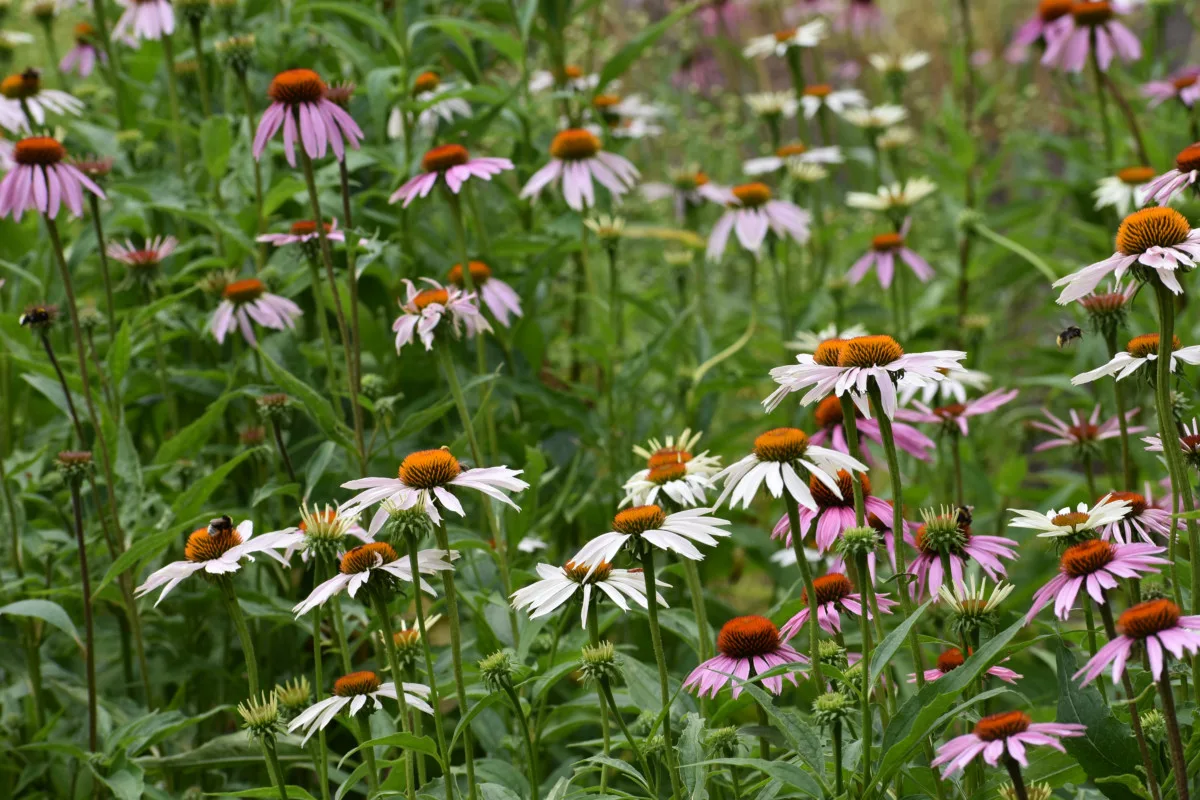
Mimicking habitats found in nature is another uncomplicated way to attract owls to your backyard. In fact, it won’t only be nocturnal birds you enchant, but also bats, butterflies, bees, nighttime moths, small reptiles, toads, birds and more.
In essence, when you incorporate native plants into your garden, you are also providing habitat for what owls need to eat.
It all circles back to rewilding, letting nature reclaim your yard with less intervention from you. Which leaves you with more time for growing fruits and vegetables. All around beneficial.
5. Owl Nesting Box
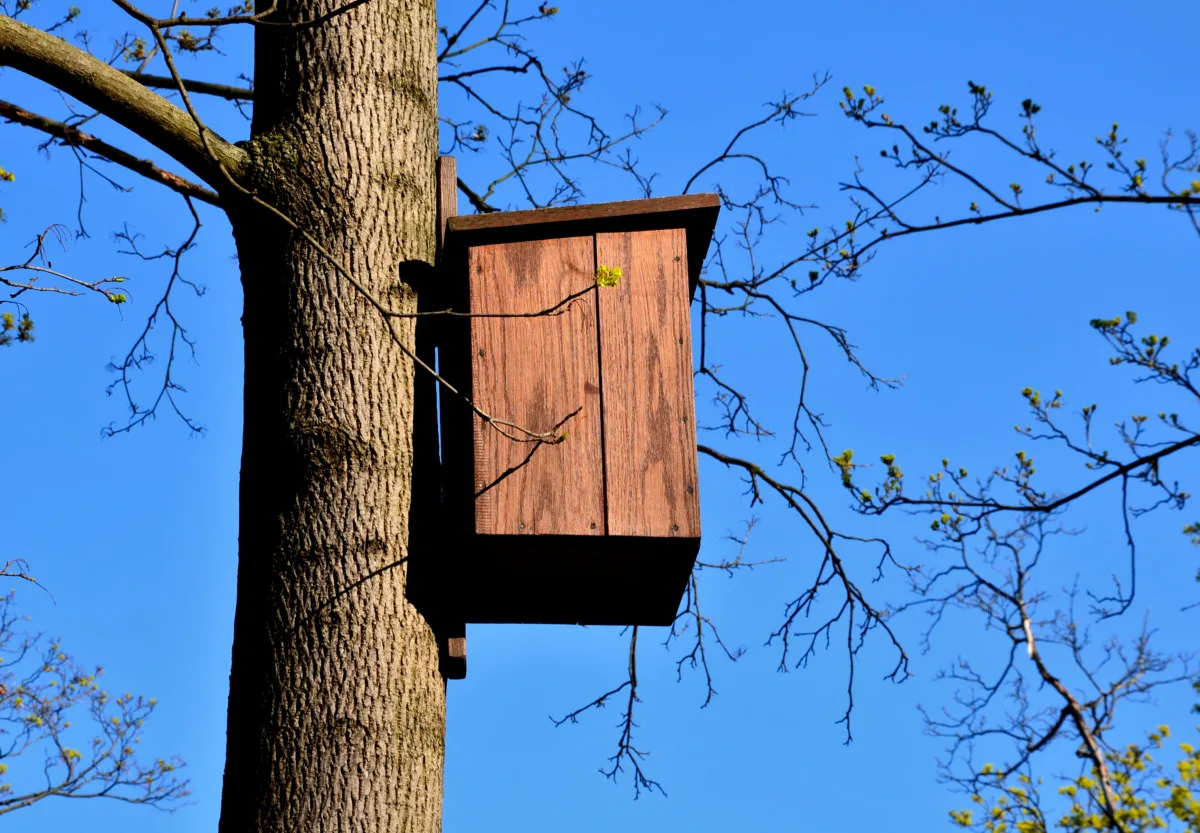
As previously mentioned, owls prefer to look around and take over what’s already available on the market. Nesting in a hollow of a tree, a cactus in the desert or a burrow in the ground.
If your backyard doesn’t provide those features, never fear, you can always install an owl nesting box and hope to attract an owl that way.
There are several owl nesting box plans out there, so first you’ll need to decide what species of owl you hope to attract. Build it, then wait very patiently for the first owl to come.
Here are a few owl nesting box plans to choose from:
- Barn Owl Nestboxes for Inside Buildings, The Barn Owl Trust
- How to Build a Screech-Owl Nest Box, Audubon
- Barred Owl Nest Box, 70 Birds
Make sure the nest blends in with the landscape to improve your chances of hosting an owl. Early spring is a great time to install a nest box, either to the side of a barn, or 10-15 feet up in a large tree. The simpler the design, the better.
6. Provide Water
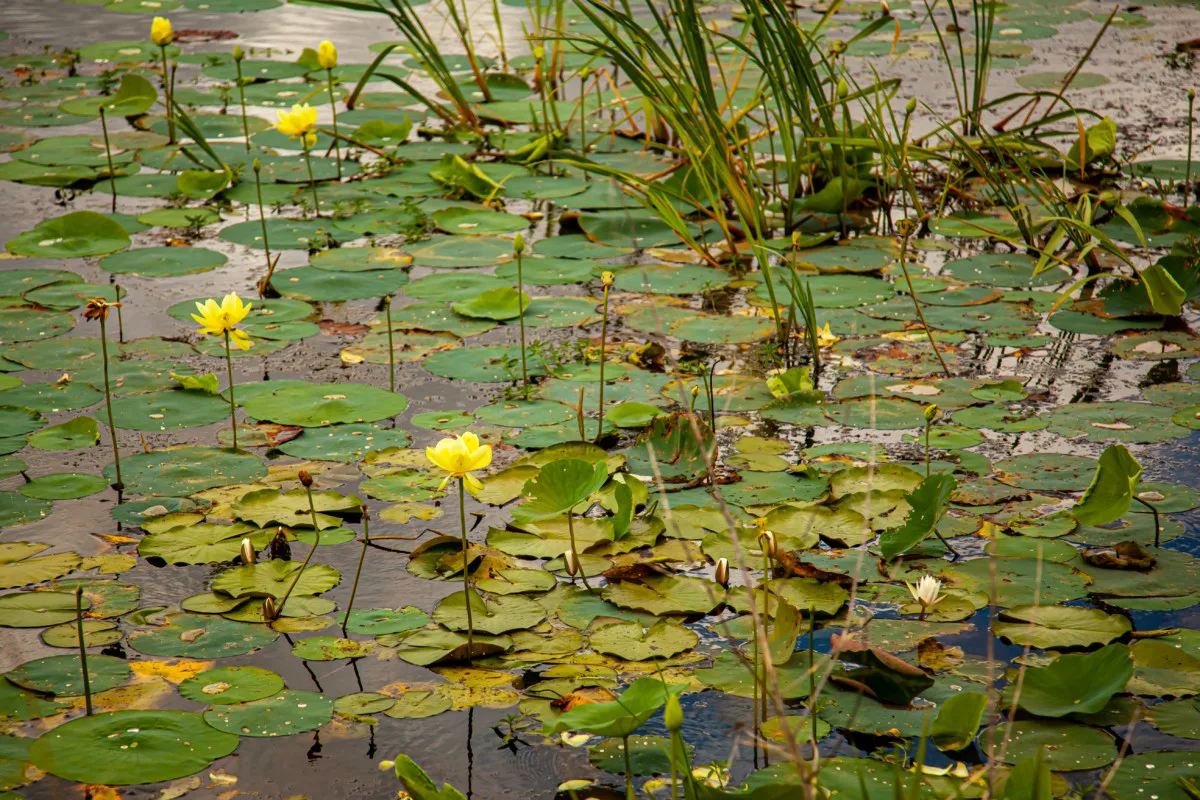
Once you have provided food and shelter, the next essential item on the list is water.
That being said, you’ll rarely see owls drinking, as they get plenty enough moisture from the food they eat. However, in hotter climates, drought conditions or when food is more difficult to find, they will imbibe small sips as they take a bath to cool off. Owls need to eat daily to cover protein needs and to stay hydrated, usually 3-4 small rodents a night.
A natural source of unchlorinated water is best. But, in the absence of running water, such as a creek or even a pond on your property, there is still the option to provide a large enough birdbath.
Even if the owls don’t use it regularly, other wildlife will.
Check out Tracey’s article on 13 reasons to install a pond or water feature to see how you can make it happen in your own garden.
7. Turn Off The Lights
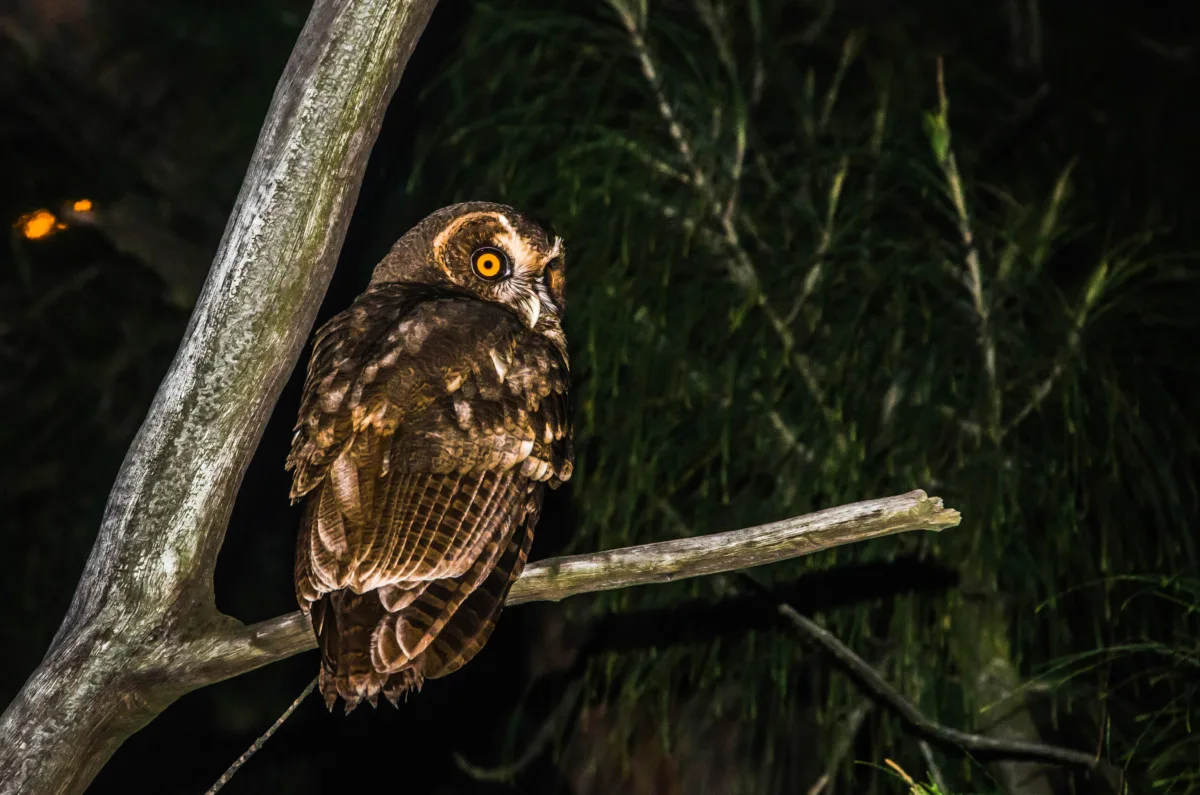
I know, modernity has a way of illuminating the night sky, mainly for safety reasons. Yet, wildlife thinks differently. Owls need the safety of dark to be effective hunters. And they will avoid street lamp lit areas if they can.
Excess light disturbs the hunting patterns of owls, at the same time putting their speed at a disadvantage. So, turn off your outside lights at night in favor of wildlife. Chances are good, that you’ll get a better night’s sleep too.
8. Be Patient
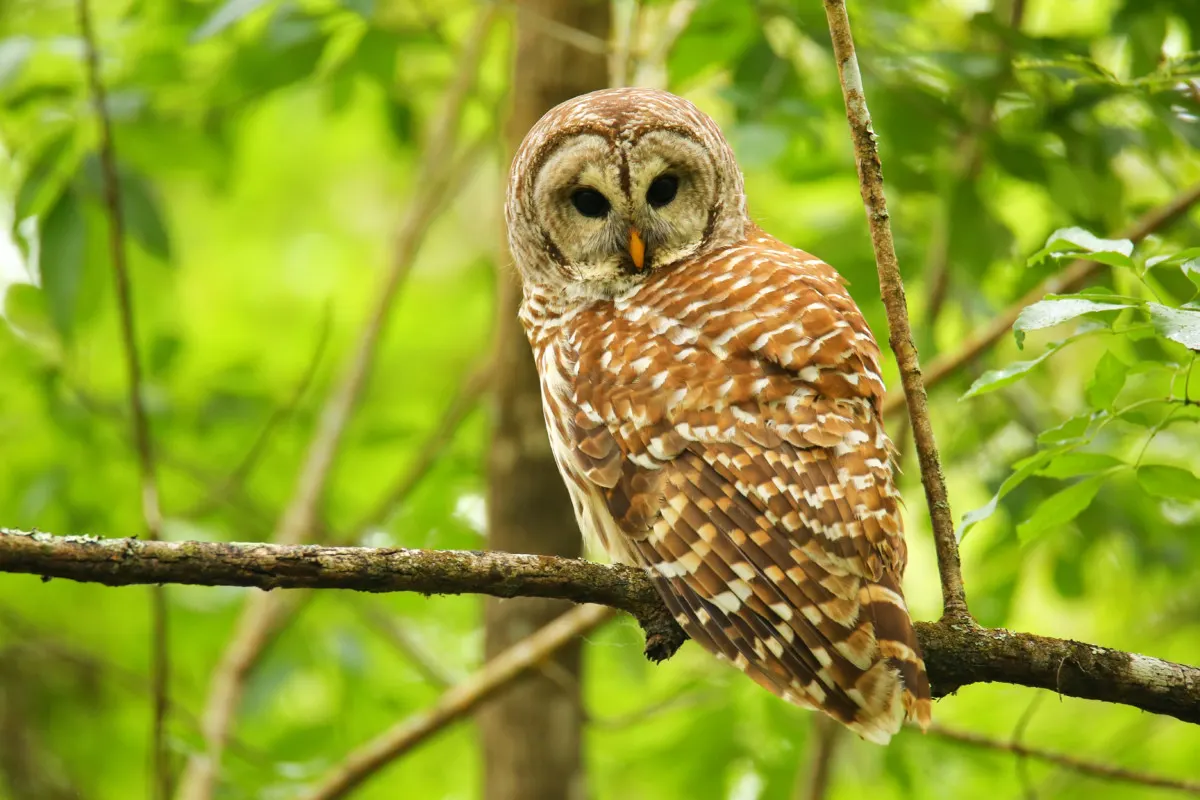
Rewilding takes time and it is essential that we find a way to rebuild trust with nature. Let’s face it, most humans can be a bit noisy and scary in our habits. Nature, on the other hand, is often quiet, unless provoked. Calm, unless stirred.
It’s also worth noting that your chances of attracting owls to your backyard increase with fewer pets on the nighttime prowl. If you can keep dogs and cats inside your home or an outdoor shelter for the night, it gives the potential owl more freedom to explore your backyard.
It all comes down to how much space/territory you have to offer. If it’s one large tree, an owl may sit in it during the day and hunt elsewhere at night. With several acres, you could even attract a parliament of owls.
What species of owls can I expect to attract in my backyard?
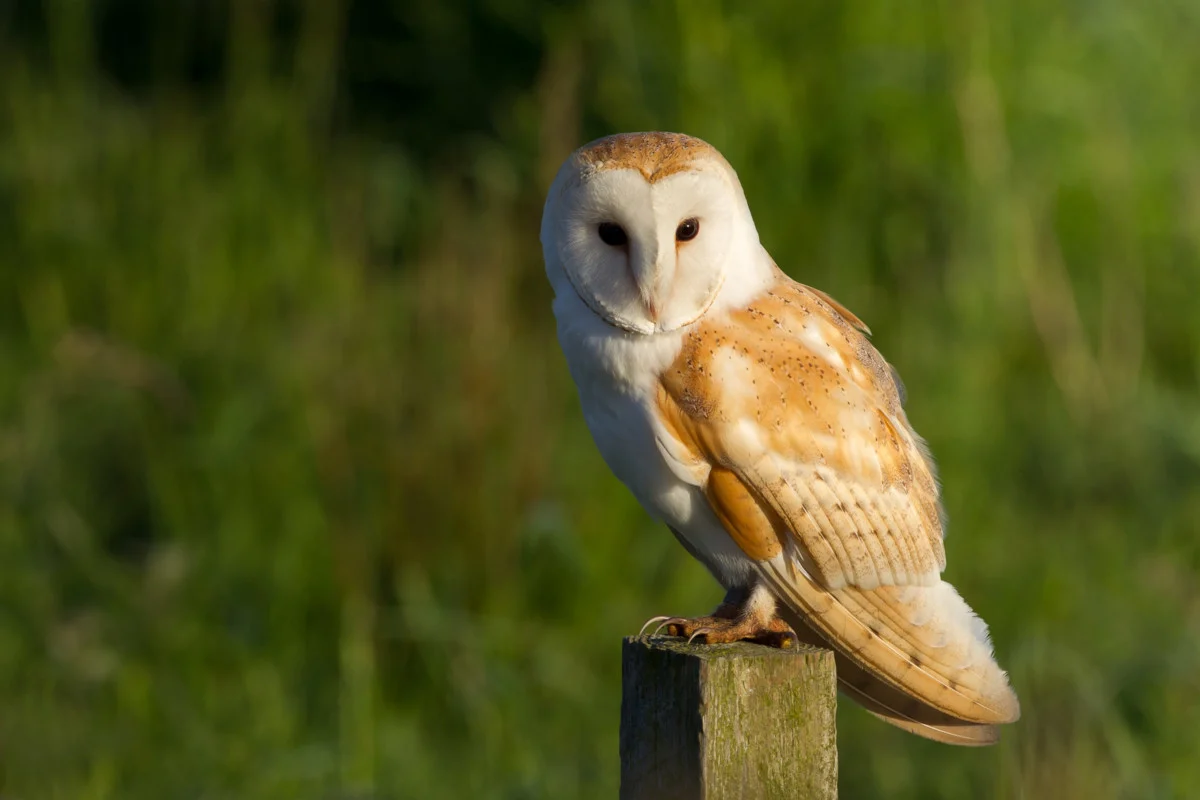
Owls may be difficult birds to entice into your backyard, yet the rewards are numerous if you can accomplish such a feat.
You absolutely need to be in the right place at the right time to attract a few of these beautiful owls:
- Barn Owl – In nearly every state, you might see this owl while out driving at night. Maybe even in an old barn. Rather than hooting, they call out with a raspy screech. Once you identify the sound, you’ll remember it forever.
- Barred Owl – These owls are here to stay, literally. It’s been noted that out of 158 birds who were banded and later found in a study, not a single one had moved more then 6 miles away.
- Great Horned Owl – Perhaps the most well known owl covering great expanses of North and South America, is the Great Horned Owl. It can be found in wetlands, deserts, forests, grasslands and most importantly backyards.
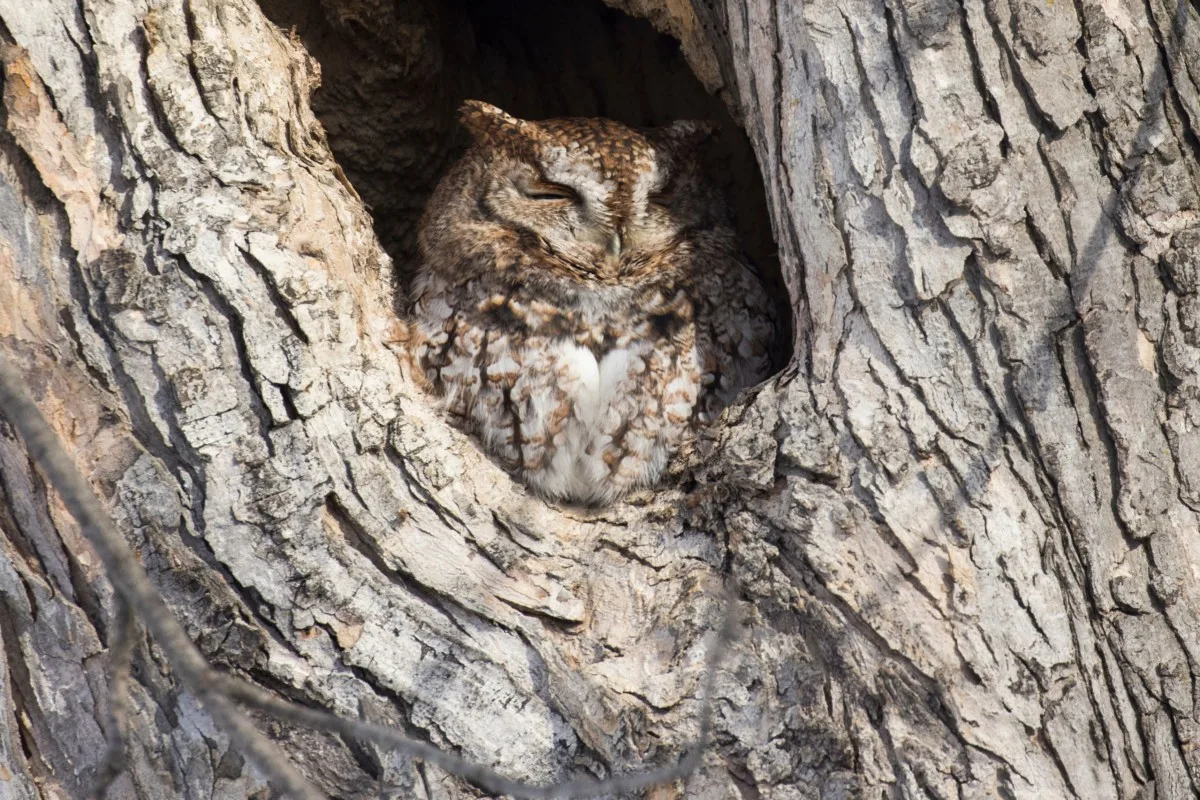
- Eastern Screech-Owl and Western Screech-Owl – The Eastern screech-owl’s habitat extends from the Canadian border straight down to the tip of Texas, as it extends from Nebraska to the east coast. Both Eastern and Western screech-owls will readily take up residence in a nest box.
A couple more tricks for attracting owls – or how not to disturb their hunting grounds.
Some people may try to attract owls with recorded calls. However, if the calls are too frequent, they may be perceived as too many competitors in the area and they may choose to fly away. It may also disrupt their natural hunting and breeding patterns.
A call here and there won’t hurt. But don’t confuse the owls.
You should also refrain from releasing mice and other rodents in the hopes that owls will catch them. Just attract the rodents with your natural landscaping as detailed above and eventually something will happen. Similarly, never toss out dead food, even if you hear owls in the area. They prefer live prey and this will only attract other animals you don’t want in your yard.

Lastly, plastic netting is a cause for concern when owls are in flight. If there is a chance they can get caught in it, put it away for the night or refrain from using it altogether.
Will the owls keep you up at night? Certainly not. But on the off chance that they do come and hoot you awake, just smile in bed, knowing that your owl-friendly yard is hard at work.

Get the famous Rural Sprout newsletter delivered to your inbox.
Including Sunday ramblings from our editor, Tracey, as well as “What’s Up Wednesday” our roundup of what’s in season and new article updates and alerts.

